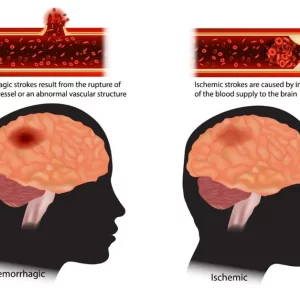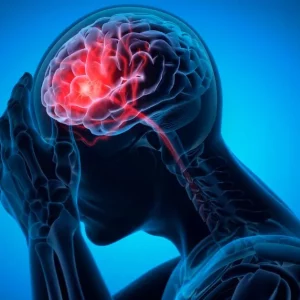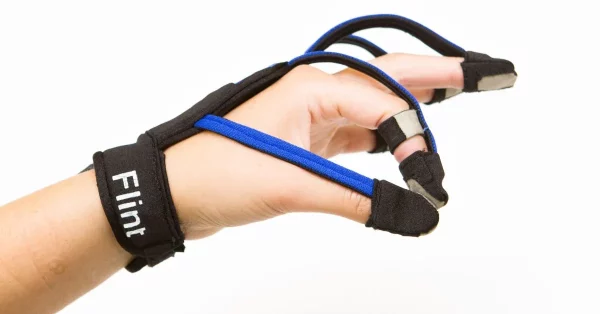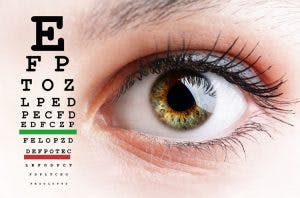A mini stroke, also known as a transient ischemic attack (TIA), occurs when a temporary blood clot forms in one of the arteries of the brain. This causes stroke-like symptoms that usually resolve within 24 hours. This mini stroke recovery does not leave permanent side effects.
But while a mini stroke does not result in permanent disabilities, it is often a sign of an impending full stroke. In fact 1 in 5 patients who experience a TIA will sustain a true stroke in the next year. Therefore, early treatment of TIAs and efforts to prevent a larger stroke are critical.
To help you understand your mini stroke recovery, this article will discuss the symptoms and causes of transient ischemic attacks. We will also explain what necessary next steps you can take to prevent a larger stroke from occurring.
Jump to a Section
Symptoms of a Mini Stroke
Diagnosing a Transient Ischemic Attack
What to Expect After a Mini Stroke
Life Expectancy After a Mini Stroke
Promoting a Successful Mini Stroke Recovery
Understanding Mini Stroke Recovery
Symptoms of a Mini Stroke
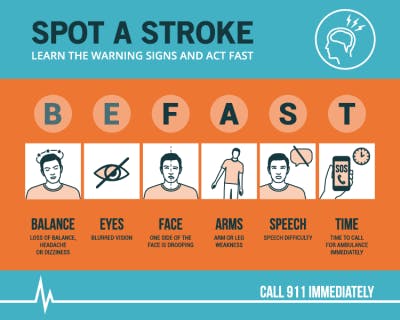
Mini strokes and full strokes have identical symptoms. To identify the signs and symptoms of both, think of the acronym F.A.S.T:
- Face. Face numbness and drooping, typically on one side
- Arm. Arm weakness
- Speech. Slurred speech or difficulty finding words
- Time. Seek emergency treatment immediately
Other common signs and symptoms include vision loss and a sudden severe headache. The effects of a mini stroke can last anywhere between 15 minutes to 24 hours.
Because mini strokes have the same symptoms as severe strokes, it is not possible to know whether you are having a transient ischemic attack or something more serious. Therefore, it is vital to get treated immediately. Go directly to the Emergency Room. In some cases, you can benefit from administration of medication such as TPA which can reverse the effects of the stroke if administered within 4.5 hours of your symptoms.
Diagnosing a Transient Ischemic Attack
The only way to tell the difference between a TIA and a full stroke is to have a full evaluation by a doctor who will perform an examination and order imaging of your brain. Imaging, like CT scans or an MRI, can reveal the extent of damage to your brain that may have occurred during the stroke.
To determine the cause of your mini stroke, your doctor might order an ultrasound or echocardiogram to see if there is blockage or plaque in your arteries. This is because ischemic strokes can be caused by plaque buildup in your arteries, which catch or start a blood clot in locations in your brain where clots can easily get stuck and block blood from providing nutrients to brain cells.
What to Expect After a Mini Stroke
Mini stroke recovery can be spontaneous. This means that mini stroke survivors do not need therapeutic rehab as with other strokes.
However, this does not mean that mini stroke survivors have a blank to-do list. Instead of rehabilitation, mini stroke recovery focuses on improving cerebral blood flow and preventing a second, more severe, stroke.
This requires addressing the underlying cause of your TIA and making certain lifestyle changes to reduce your risk of stroke. See our recommendations below.
Life Expectancy After a Mini Stroke: A Positive Outlook
While a mini stroke (TIA) can certainly be a scary event, it’s important to remember that it’s often a wake-up call, not a final warning. The good news is that TIAs themselves don’t typically shorten life expectancy. Think of it as your body giving you a valuable heads-up, allowing you to take proactive steps to prevent a more serious stroke in the future.
By working closely with your doctor and making positive lifestyle changes, you can significantly reduce your risk and potentially avoid a major stroke altogether. This means focusing on:
- Managing underlying conditions: This includes keeping your blood pressure, cholesterol, and blood sugar under control, often through medication and healthy habits.
- Embracing a heart-healthy lifestyle: Prioritize regular exercise, a balanced diet low in saturated fats and sodium, and stress management techniques. It is also important to stop smoking and avoid excessive alcohol consumption.
- Staying vigilant: Pay attention to any unusual symptoms and don’t hesitate to seek medical attention if you have any concerns.
Remember, a mini stroke is not a guarantee of future disability or a shortened lifespan. It can serve as a warning sign, providing you an opportunity to take charge of your health and make choices that support a long and fulfilling life. With the right approach, you can not only recover from a TIA but also thrive in the years to come.
Promoting a Successful Mini Stroke Recovery
Mini stroke survivors should work closely with their doctors to identify the cause of the mini stroke and prevent a full-size stroke.
Here are a few common treatment options for mini stroke recovery that your doctor may recommend:
1. Medications to Lower Cholesterol
Some ischemic strokes result from arterial plaque, either narrowing an artery so that a clot is easily trapped or clumping in a way that helps a clot to form. These plaques develop more easily when a person has high cholesterol. That is why some doctors may suggest you begin taking medication to lower your cholesterol. The family of “Statin” medications are well established and are effective in lowering cholesterol levels.
2. Anti-Platelets and Anti-Coagulants
Mini strokes also result from a blood clot that temporarily blocks the flow of blood in the brain. Anti-platelet medications prevent your blood platelets from clumping together, which can reduce your risk of blood clots. Examples of these medications include aspirin and clopidogrel.
There are also other anti-coagulant drugs such as heparin and warfarin that do not target your platelets. Rather, they target a specific protein in the blood that causes clotting.
Both types of medications come with their own set of risks. Talk to your doctor to see which medications are best suited for your mini stroke recovery.
3. Surgical Interventions
If your arteries are narrowed and filled with plaque, you may require surgery to remove the plaque and improve blood flow. This will help prevent a blood clot from getting stuck in the narrowed artery.
The most common surgical treatment for narrowed arteries is a carotid angioplasty. This minimally invasive procedure involves inserting a catheter through the femoral artery in your groin. The doctor then places a stent at the artery’s narrow point, which widens your artery and improves blood flow.
If you have a severe blockage in your carotid artery, your doctor might recommend a more invasive procedure known as a carotid endarterectomy. This procedure allows the surgeon to clear your arteries of fatty deposits, which can greatly reduce your risk of a second stroke.
4. Lifestyle Adjustments
Last, but not least, an individual’s lifestyle habits can significantly reduce the risk of a second stroke. The most common risk factors for stroke include:
- Hypertension (high blood pressure)
- Diabetes
- High cholesterol
- Obesity
- Smoking
- Chronic stress
If you have one or more of these conditions, consider – with help from your doctor and family – ways to reduce some of these risk factors through lifestyle changes.
For example, hypertension can be treated with medication, but blood pressure can also be reduced with a low-sodium diet. Similarly, high cholesterol can be treated with medication, as noted above, but also a diet rich in fiber and reduced saturated fats can reduce cholesterol.
Spend some time discovering the best foods for stroke recovery and make sure to talk to your doctor before starting any new diet. For example, a popular diet such as the ketogenic diet may increase cholesterol levels (at least initially) which would be counterproductive. So, be careful not to “jump on any bandwagons” before consulting with your doctor. Many doctors will recommend the DASH eating plan for individuals who are at risk for stroke.
If exercise could be put into pill form, it would be the most desirable drug on the market. Its effects are widespread beyond burning a few calories. Do consider increasing your exercise.
Lifestyle changes are challenging, so give yourself replacements for anything eliminated and find ways to make exercise fun for you.
Understanding Mini Stroke Recovery
Mini strokes resolve quickly and lead to a full recovery. However, while mini strokes themselves are not life-threatening events, they are a warning sign of a potentially more serious stroke in the future.
Therefore, patients who experience a TIA should take immediate steps to address any stroke risk factors they may have. If you can make these important adjustments, you can improve your chances of avoiding a full stroke entirely.




